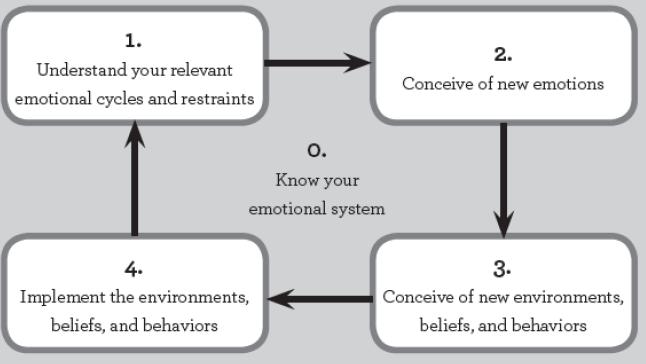I recommend reflecting on your experience with this chapters exercise before continuing. You can reflect about anything
Question:
I recommend reflecting on your experience with this chapter’s exercise before continuing. You can reflect about anything you found relevant, but here are some questions you may want to consider:
How does The Method compare with ways you have changed your life?
What can you learn from Mandela, Thoreau, and their peers to lead?
What heroes and role models of yours also went through personal growth?
What is self-awareness to you?
Where and how might you apply your experience in the rest of your life?
Data from Exercise
This time, we’ll work with it actively. What better way to work with something than to use it to improve our lives? Since everyone’s emotional system is similar, learning about the one we have most access to—our own—teaches about everyone’s.
Our goal is awareness of and skills with both our emotional system and everyone else’s
What to Watch
First watch the following two-part videos on The Method, based on my in person course:
http://spodekacademy.com/bookcourse-videos Then do the exercise described at the end of the first video, which I describe below.
What to Do
The exercise is to do The Method, as described in depth in the videos and briefly illustrated here, in a situation that matters to you. I recommend doing it with a group of two to four people if you can, but it also works if you do it solo.

First, choose a situation in your life you’d like more emotional reward from. Ideally something you can change in the time you plan for this exercise (for most, about a week).
0. Know your emotional system.
1. Write out that situation’s environment, beliefs, emotions, and behaviors (which you already did if you use one you wrote in The Model exercise) and your constraints that you won’t or can’t do in such situations.
2. Conceive of new emotions you could have in such situations. I recommend thinking of how you think your role models would feel in similar situations or using your imagination.
3. Conceive of environments, beliefs, and behaviors that will create the new emotions without triggering what you won’t or can’t do.
4. Implement the new environments, beliefs, and behaviors.
When the environments, beliefs, and behaviors synchronize to create the emotion you want and you feel emotional reward, indulge in that feeling to help motivate you to do it again. When they don’t, try to acknowledge it and move on to avoid discouraging yourself.
Step by Step Answer:

Leadership Step By Step Become The Person Others Follow
ISBN: 978-1400239146
1st Edition
Authors: Joshua Spodek





